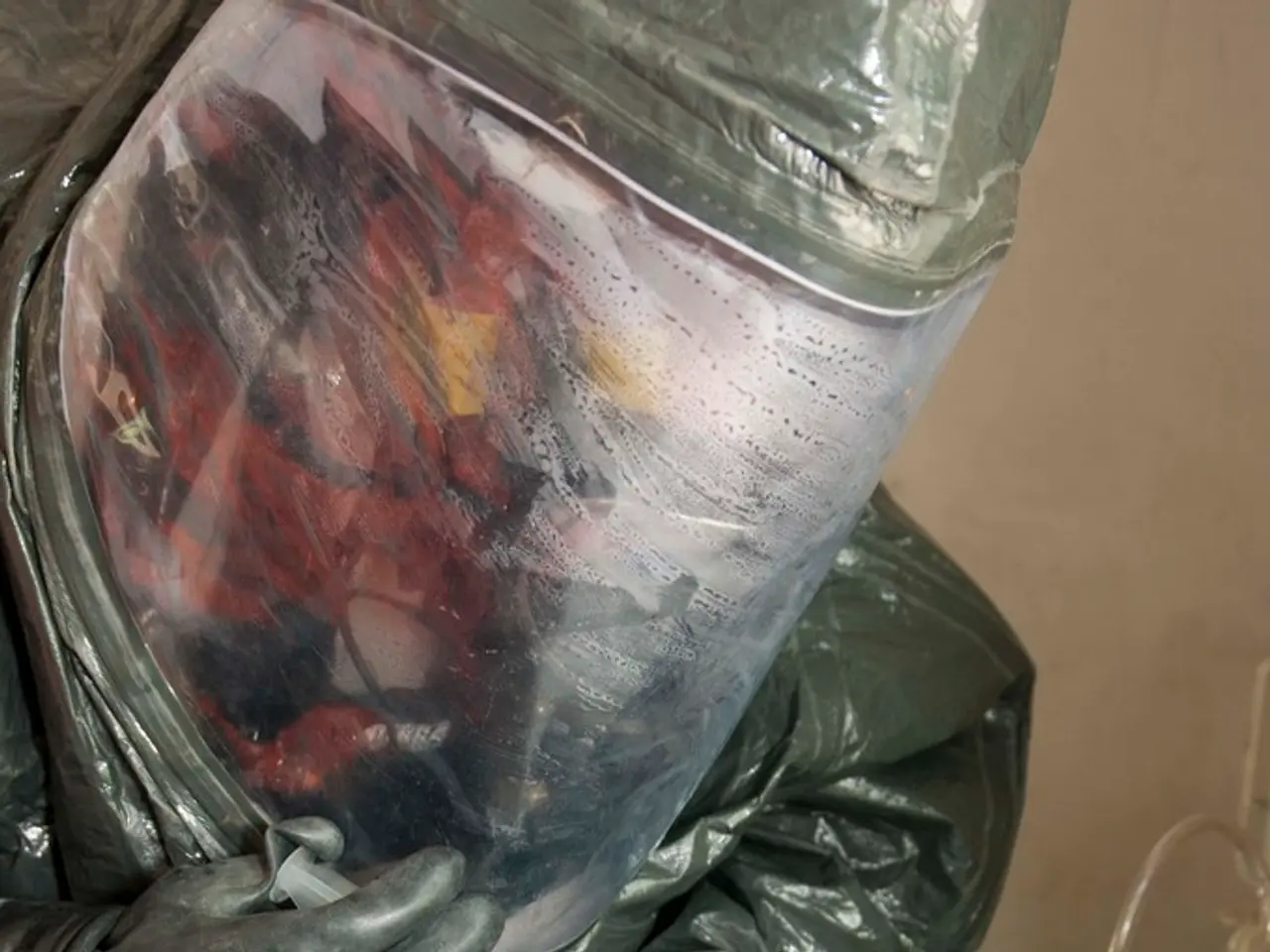Cracks in the Skin: Root Causes, Remedies, and Processes for Healing
Skin fissures, cracks in the skin, are a common issue that can affect various parts of the body, including the fingertips, between toes or fingers, heels of the feet, and other dry areas. These cracks can be superficial or deep, with the latter penetrating the deeper layers of the skin.
Skin fissures are often the result of dry skin, skin injuries such as friction or burns, certain skin conditions like eczema (including atopic, dyshidrotic, and discoid eczema), irritant and allergic contact dermatitis, bacterial and fungal infections, and environmental factors like cold climate or frequent exposure to water and harsh chemicals.
Dry skin leads to a loss of skin elasticity and barrier function, making fissures more likely. Friction or mechanical injury from clothing or repetitive movements can cause cracks. Eczema types often cause skin to become red, itchy, cracked, and prone to fissuring. For example, discoid eczema causes round cracked sores, often triggered by dry skin, poor circulation, cold, and infections.
Irritant contact dermatitis from repeated exposure to acids, alkalis, detergents, solvents, hair dyes, or cement can cause skin irritation leading to fissures. Allergic contact dermatitis from allergens such as nickel, latex, fragrances, and hair products also damages the skin. Fungal and bacterial skin infections weaken skin integrity, increasing fissure risk. In breastfeeding women, cracked nipples (a form of skin fissure) may arise from friction, infection, or eczema.
Environmental factors like cold weather and frequent hand washing or wet work increase fissure risk by drying and irritating skin. People with jobs that involve handling irritating chemicals, working outdoors, or prolonged standing can also be at risk, as these activities can place pressure on the heels, potentially causing skin fissures. Open-backed or unsupportive footwear can play a role in cracked heels, increasing pressure on the surrounding skin.
People with diabetes, particularly those with autonomic neuropathy, are at greater risk for skin fissures on the feet due to a dry environment created by reduced sweating. Angiopathy, which refers to damage to blood vessels, is another potential cause of skin fissures.
If fissures are frequent, recurring, or do not heal on their own, a doctor may investigate whether an underlying health condition could be the cause. For superficial skin fissures, doctors may recommend a self-care regimen that encourages fissures to heal and prevents new fissures from forming. This may include the use of a good moisturizer for areas of dry and cracked skin, which may include humectants, salicylic acid or alpha hydroxy acid, and urea.
For deeper skin fissures, doctors may use debridement, prescription-strength skin softeners or debriding agents, skin glues, strapping, bandaging, or dressings, and antibiotics if a fissure contracts an infection.
It is essential to seek help from a doctor if your skin fissures worsen or do not respond to home treatments, experience pain while walking or standing, frequent bleeding, swelling, pus, or the affected area becomes warm to the touch.
[1] British Journal of Dermatology (2020) [2] Journal of the American Academy of Dermatology (2017) [4] Pediatric Dermatology (2020)
- Skin fissures, often a result of dry skin or certain skin conditions like atopic eczema, ankylosing spondylitis, or psoriasis, can affect various parts of the body.
- Chronic inflammatory conditions such as ulcerative colitis, Crohn's disease, or hepatitis can weakened skin integrity, increasing the risk of skin fissures.
- The tier of medical-conditions that can lead to skin fissures might also include depression, affecting mental health, and causing neglect of skin care.
- Skin fissures caused by repeated friction, like in crooked joints common in ankylosing spondylitis, can be hard to treat and may require predictive therapies and treatments.
- A therapy for skin fissures might involve dermatitis treatments like topical steroids or moisturizers, depending on the cause and severity of the condition.
- It is crucial to note that dermatitis can manifest differently in various individuals, and skin-care routines must be tailored to specific medical-conditions, like breast disorders or atopic disease.
- In some cases, skin fissures could indicate underlying health issues, such as cancer, diabetes, or sickle cell disease, and a medical consultation may be necessary to rule out potential complications.
- Health-and-wellness campaigns can emphasize the importance of proper skin care and early detection, especially for conditions that can lead to skin fissures like dermatitis or eczema.
- Science has made remarkable progress in understanding the causes and treatments of various health-and-wellness concerns, including skin-care, dermatitis, and other medical-conditions associated with skin fissures.
- AQ studies have shown that people with chronic health conditions, like cancer, diabetes, or autoimmune diseases such as rheumatoid arthritis or multiple sclerosis, are often more prone to skin fissures due to the weakening of the immune system and skin integrity.




